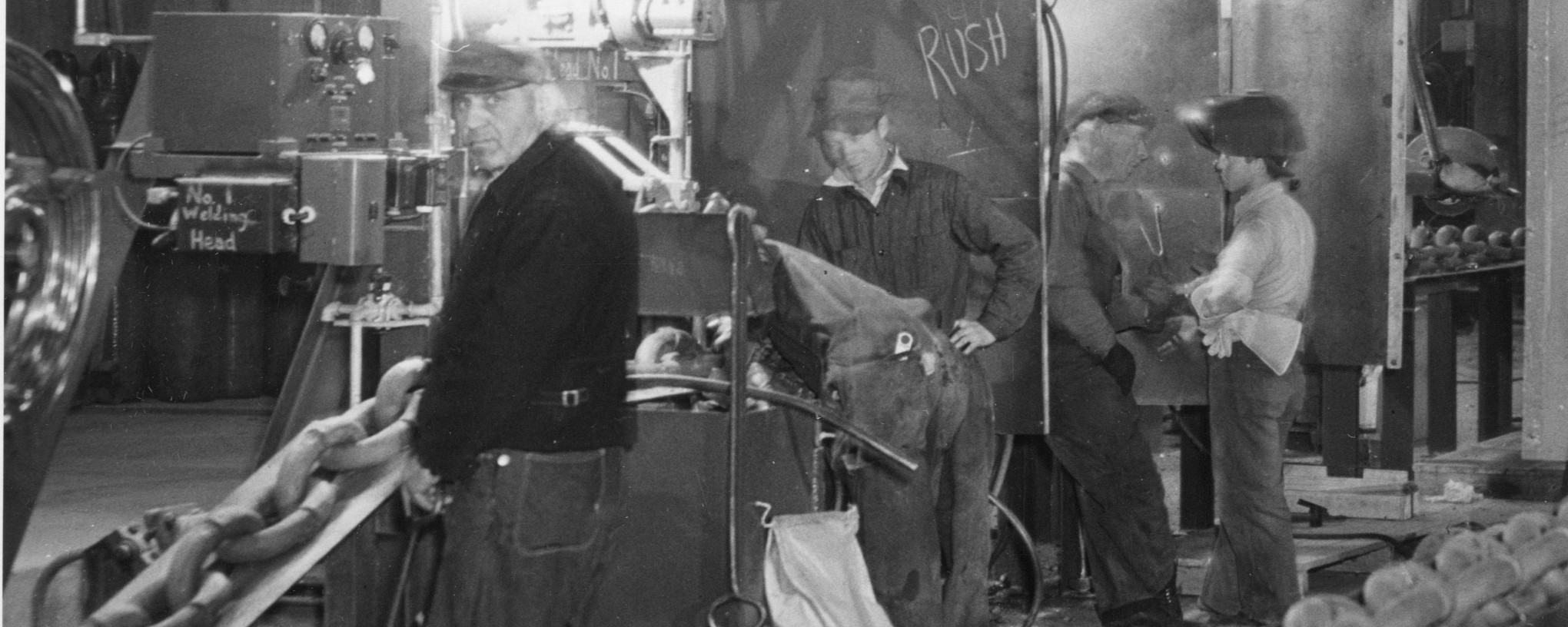World War II at Home, 1942

Even though the United States did not officially enter World War II until December 8, 1941, Vermonters had been involved—mostly indirectly—in the war effort for over a year. On September 1940, the Secretary of War ordered units of the Vermont National Guard into active duty; and in October—following the enactment by Congress of the Selective Service Act, creating the first peace-time draft in U.S. history—young Vermont men began receiving draft notices. Over the winter of 1940-1941, facilities at Fort Ethan Allen were expanded to house the 1,700 men of the Guard and their equipment. Meanwhile, efforts were underway to gain support for President Franklin Delano Roosevelt’s Lend-Lease plan to assist those nations resisting Germany’s army by providing arms and defense materials, and some Vermont industries began shifting over to war-related production.
Oral history transcriptions
Click a name below for more information. All transcripts are in PDF format.
Background information
When the U.S. did enter the war, Vermonters became more active participants at home as well as abroad. From 1942 to 1945, in addition to sending about 50,000 of its residents into service (including about 1,400 women), Vermonters bought $263,500,000 in war bonds, practices air raid maneuvers, acted as plane spotters, attended Red Cross training classes, collected milkweed pods for flotation devices, knitted sweaters and socks, and enthusiastically participated in drives to collect scrap iron, aluminum, paper, and rubber. In the second half of 1943, Vermont led the nation in volunteer salvage collection, with a per capita rate of 162.9 pounds per person.
The war briefly invigorated Vermont’s industrial economy. The Springfield-Windsor area felt the impact earliest and most directly. Suffering from a lull in production between 1929 and 1937, the machine-tool industry started to receive orders from Japan, and then after President Roosevelt embargoed trade with Japan, orders from the U.S. government and government contractors for machine tools, as well as parts for aircraft, tanks, radar equipment, and guns. Other industries throughout the state retooled or adapted their manufacturing equipment to produce armaments and parts. Woolen manufacturing surged in Windsor County, Winooski, and Northfield. The marble sheds in Rutland produced wooden aircraft parts and packing boxes. Barre’s granite sheds made anchor chains and wood-sheathed bumpers for the U.S. Navy. Shelburne Shipyards built PT boats, small tugboats, and submarine chasers. The agricultural sector also got a boost from combined military and civilian demand for milk, eggs, poultry, and maple products.
This activity did not, however, entirely overcome the wartime shortages of equipment, labor, foods, and consumer goods. Like those throughout the country, Vermonters learned to live with and manipulate the rationing and distribution programs imposed by the government in order to support the needs of military forces abroad.
Citation for this page
Woodsmoke Productions and Vermont Historical Society, “World War II at Home,” The Green Mountain Chronicles radio broadcast and background information, original broadcast 1988-89. https://vermonthistory.org./world-war-ii-at-home-1942